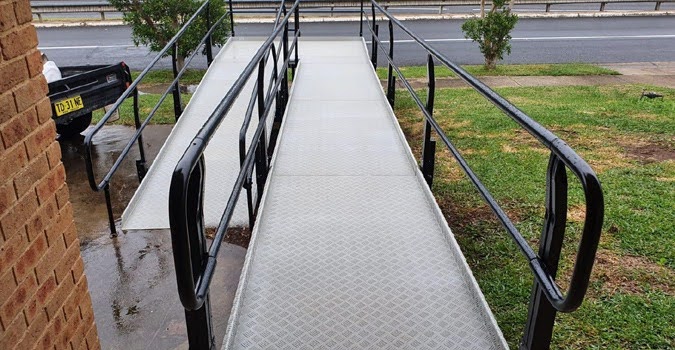In the modern age of urban development, designing inclusive public spaces is no longer an option—it’s a necessity. Urban areas should reflect the diverse needs of the people who use them. For over 4.4 million Australians living with disabilities—accounting for nearly 18% of the population—accessibility in public design is critical for full participation in community life.
Accessibility innovations today stretch far beyond the traditional wheelchair ramp. Modern Australian cities are now focusing on solutions that embrace all forms of mobility, cognitive challenges, and sensory impairments. In this article, we’ll explore how urban design in Australia has evolved from minimal compliance to inclusive, user-centric innovation—and how cities are using smart design, signage, and technology to make everyday life more navigable for everyone.
The Evolution of Accessibility Standards in Australia
Australia has made significant strides over the past few decades in terms of urban accessibility. The roots of regulated inclusive design began with the Disability Discrimination Act 1992, which paved the way for formal accessibility guidelines. Over time, this framework was strengthened through the Disability (Access to Premises – Buildings) Standards 2010, ensuring that new and existing public structures met essential access requirements.
Initially, compliance often meant doing the bare minimum—installing ramps and a few tactile indicators. However, today’s standards reflect a more integrated and thoughtful approach. For example, considerations now extend to auditory guidance systems, accessible pathways, low-gradient curbs, and well-located DISABLED PARKING bays. These design elements are no longer seen as optional add-ons but as foundational components in modern infrastructure.
The shift in mindset from mere compliance to genuine inclusivity signals a broader cultural change in how we perceive urban participation for all abilities.
Effective Visual Communication in Accessible Spaces
Signage is one of the most underrated yet critical aspects of accessibility. Clear, legible, and standardized signage can mean the difference between inclusion and isolation for people with disabilities. Whether navigating a city street or a busy transit terminal, individuals need visual cues they can trust.
Australia has embraced international best practices when it comes to visual communication in public spaces. Standardized pictograms—like those used in bathroom indicators, pedestrian crossings, and public parking—enable quick understanding without relying on language.
A prime example of this in action is Jason Signs’ disabled parking with picto sign, which meets compliance requirements while also being visually intuitive. These signs serve dual purposes: they guide those who need the services while also reminding the general public of accessibility etiquette and awareness.
Effective signage doesn’t just help people with physical limitations—it aids those with cognitive challenges, limited vision, or neurodiverse conditions by offering consistency, predictability, and reassurance in busy public environments.
Beyond Basic Compliance: Innovative Accessibility Solutions
Australian cities are moving beyond static, one-size-fits-all designs and embracing adaptive, responsive urban design. For example, in Brisbane, the city council has piloted smart pedestrian crossings with audio prompts and extended crossing times triggered by mobility aid sensors. In Melbourne, tactile ground surface indicators (TGSIs) are now used more thoughtfully to avoid overwhelming or conflicting patterns.
Public transport hubs are increasingly equipped with features like lift buttons placed at dual heights, visual displays for train timings accompanied by audio announcements, and mobile apps that assist visually impaired commuters with real-time navigation.
Some parks have even introduced all-abilities play areas, complete with wheelchair-accessible swings and sensory-friendly equipment—enabling children with and without disabilities to play side by side.
These innovations prove that accessibility isn’t about catering to a niche demographic—it’s about enriching the public experience for everyone.
The Business Case for Inclusive Design
There’s a compelling economic argument for investing in inclusive design. Accessibility isn’t just ethical—it’s profitable.
For businesses, accessible storefronts, websites, and facilities expand their customer base significantly. A study by the Australian Network on Disability found that people with disabilities and their families control over $40 billion in annual disposable income in Australia. When public spaces are inclusive, they naturally attract more foot traffic and broader patronage.
Moreover, accessibility improvements often benefit more than just individuals with disabilities. Think of wide automatic doors that help parents with prams, or captioned videos that assist non-native English speakers. These universal benefits are known as “curb-cut effects”—features originally designed for one group that prove useful to many.
In government and infrastructure development, accessibility improvements often show strong return on investment (ROI) through increased usage, higher satisfaction rates, and reduced retrofitting costs in the future.
Inclusive Urban Planning: Collaborating with the Community
An essential aspect of successful accessibility design is community involvement. Councils and design firms across Australia are now consulting with individuals with disabilities during the planning phase of major projects.
This participatory approach ensures that real-world experiences are taken into account—resulting in more usable and relevant infrastructure. It also aligns with the United Nations Convention on the Rights of Persons with Disabilities, to which Australia is a signatory.
When people with lived experiences are part of the planning team, solutions tend to be more holistic. Whether it’s selecting the best materials for tactile paths or choosing auditory signals for crosswalks, their insights are invaluable.
Furthermore, involving communities fosters a sense of ownership and pride. Inclusive cities are not built for people with disabilities—they’re built with them.
Leveraging Technology for Accessibility
Technology is a game changer in the realm of urban accessibility. From AI-powered navigation tools to smart infrastructure, tech is enabling more precise, personalized support in public environments.
Apps that locate accessible restrooms, real-time public transport updates for mobility users, and wearable devices that assist with spatial awareness are just the beginning. Virtual reality (VR) is even being used by urban planners to simulate the user experience of people with disabilities—helping designers empathize and optimize spaces before construction begins.
Digital kiosks now include voice command capabilities and adjustable screen heights, while public Wi-Fi networks are being leveraged to support navigation tools for individuals with vision impairment.
The future of accessibility lies at the intersection of thoughtful design and smart technology.
Conclusion
Australia is undergoing a quiet revolution in how cities are built—not just with concrete and steel, but with empathy and foresight. Inclusive urban design is no longer about fulfilling legal requirements; it’s about fostering a culture of dignity, participation, and mutual respect.
As cities continue to grow, so does the opportunity to advocate for thoughtful improvements. Whether it’s a well-marked DISABLED PARKING sign or a cutting-edge audio navigation system, every element plays a role in shaping how welcoming a space truly is.
Let this be a call to action—not just for policymakers and planners, but for every citizen. Next time you pass by a ramp, a tactile tile, or an accessible bathroom, recognize that someone’s life just became easier because of it. Together, through design and awareness, we can reshape our cities to be truly inclusive—for everyone. For more information, visit website.



